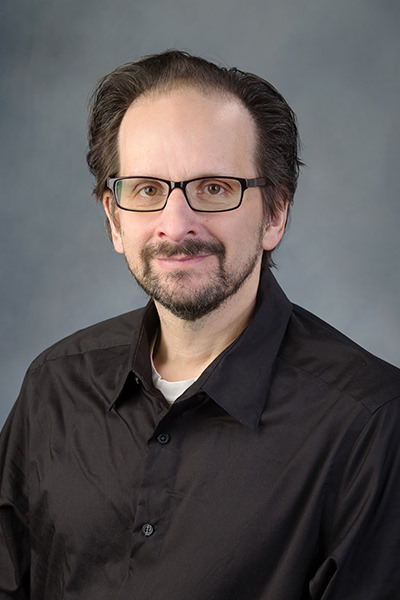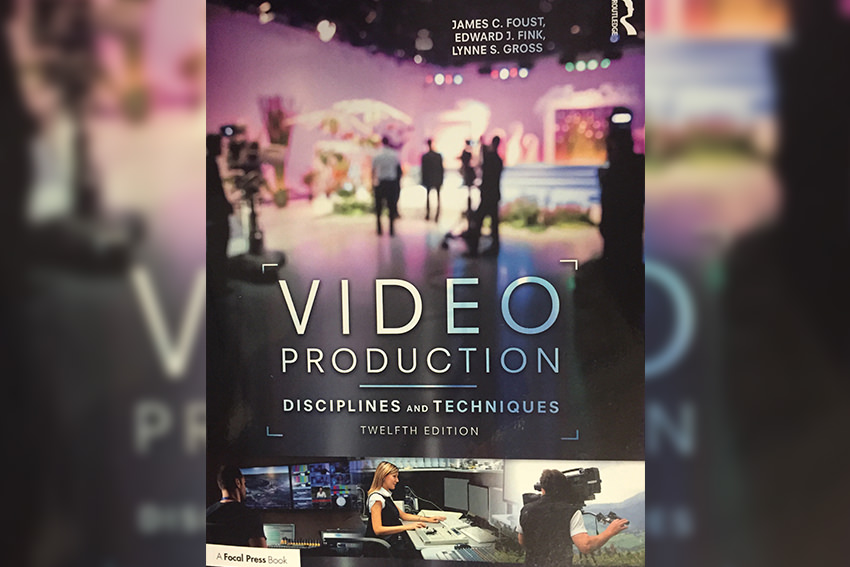Foust is lead author of video production
When the Bowling Green State University School of Media and Communication moved into the Michael & Sara Kuhlin Center in 2016, it aligned perfectly with Dr. James Foust’s work to update a textbook about video production.
 Foust, a professor and department chair of journalism and public relations, is lead author with Edward J. Fink and Lynne Gross of the 12th edition of “Video Production Disciplines and Techniques.” Fink is a professor of cinema and television arts and interim dean of the College of Communications at California State University, Fullerton, and Gross has taught television production at numerous U.S. colleges and internationally. This edition is published for the first time by Routledge, a global publisher of academic books, journals and online reference.
Foust, a professor and department chair of journalism and public relations, is lead author with Edward J. Fink and Lynne Gross of the 12th edition of “Video Production Disciplines and Techniques.” Fink is a professor of cinema and television arts and interim dean of the College of Communications at California State University, Fullerton, and Gross has taught television production at numerous U.S. colleges and internationally. This edition is published for the first time by Routledge, a global publisher of academic books, journals and online reference.
The book introduces readers to the operations underlying video production and the “continuing move to digital,” Foust said. For the first time since the book was published in 1978, all references to analog video have been removed. He has been involved with the book since its eighth edition.
In previous versions, we held onto the analog information because often schools and universities are behind the times, but we decided it was time to focus on digital video,” Foust said.
There is an increasing emphasis on technologies including digital, nonlinear, streaming platforms, mobile production, videos on servers and digital storage devices,” he said. “The impetus for the updated focus is because television distribution is changing.
In the 1970s, everyone watched TV on TV sets; now they are watching on TVs, tablets, phones, etcetera, so we wanted to acknowledge that trend,” he added.
When they started the process to update the textbook, Foust and his colleagues reviewed the 2013 edition for changes and asked for feedback from faculty across the county who had been using it. Foust also spent a great deal of time talking with the experts who were setting up the new video production studios in the Kuhlin Center, to understand the most efficient and best ways to set up a studio today.
Other big changes in the industry include the use of robotic cameras, digital single-lens reflex (DSLR) and smartphone cameras, and drones. Robotic cameras are increasingly used in news and sport programs because of their ability to be programmed to do more sophisticated camera moves. Drones have “created another opportunity for camera mounting and movement,” Foust said, leading to “a wide variety of shots previously possible only with the use of a helicopter.” DSLR and smartphone cameras, though not as integrated into the studio production environment as studio cameras, can be effective in field production environments, he said.
The book took about a year of research and writing, Foust said, covering topics that range from theory and techniques to equipment and disciplines. Each chapter includes key takeaways, review questions and on-set exercises and a comprehensive glossary of terms. His chapters included the introduction, equipment, cameras, switchers, video recording and field production.
Updated: 01/17/2018 05:32PM

